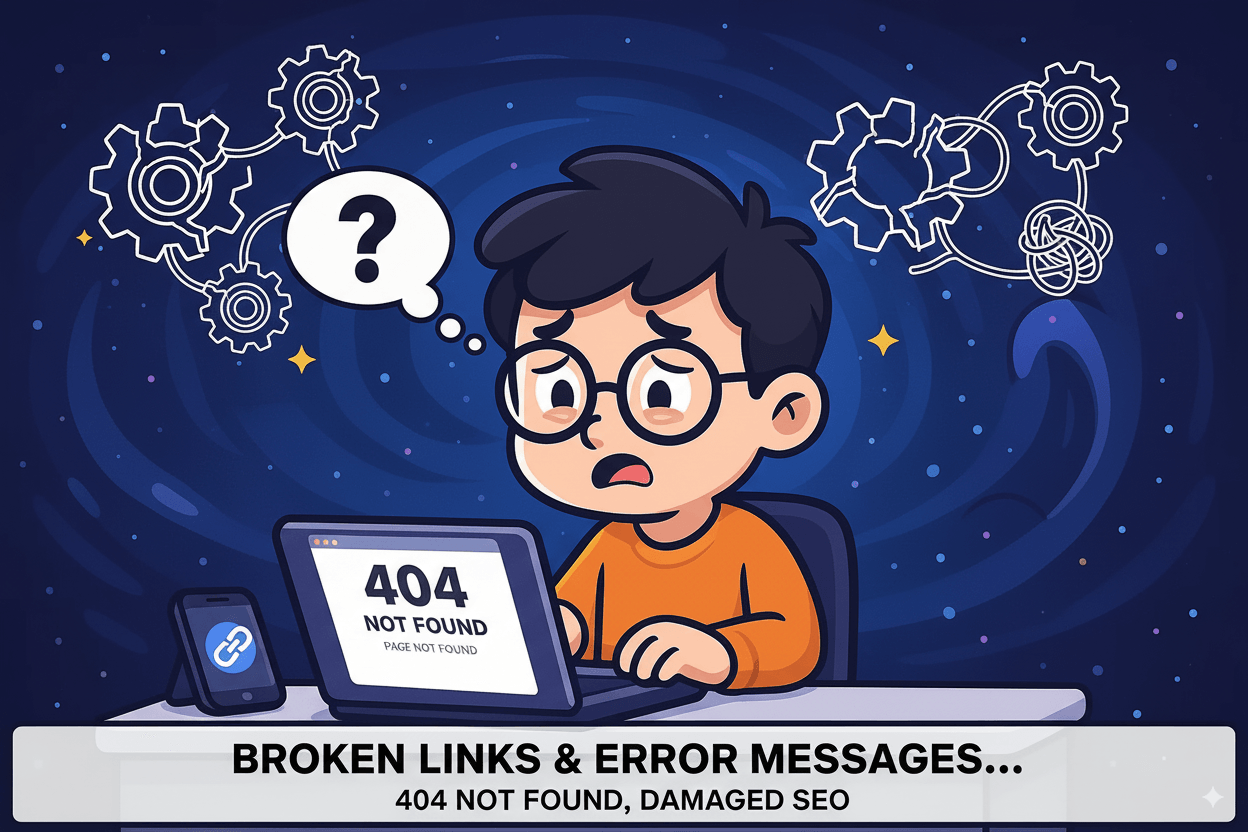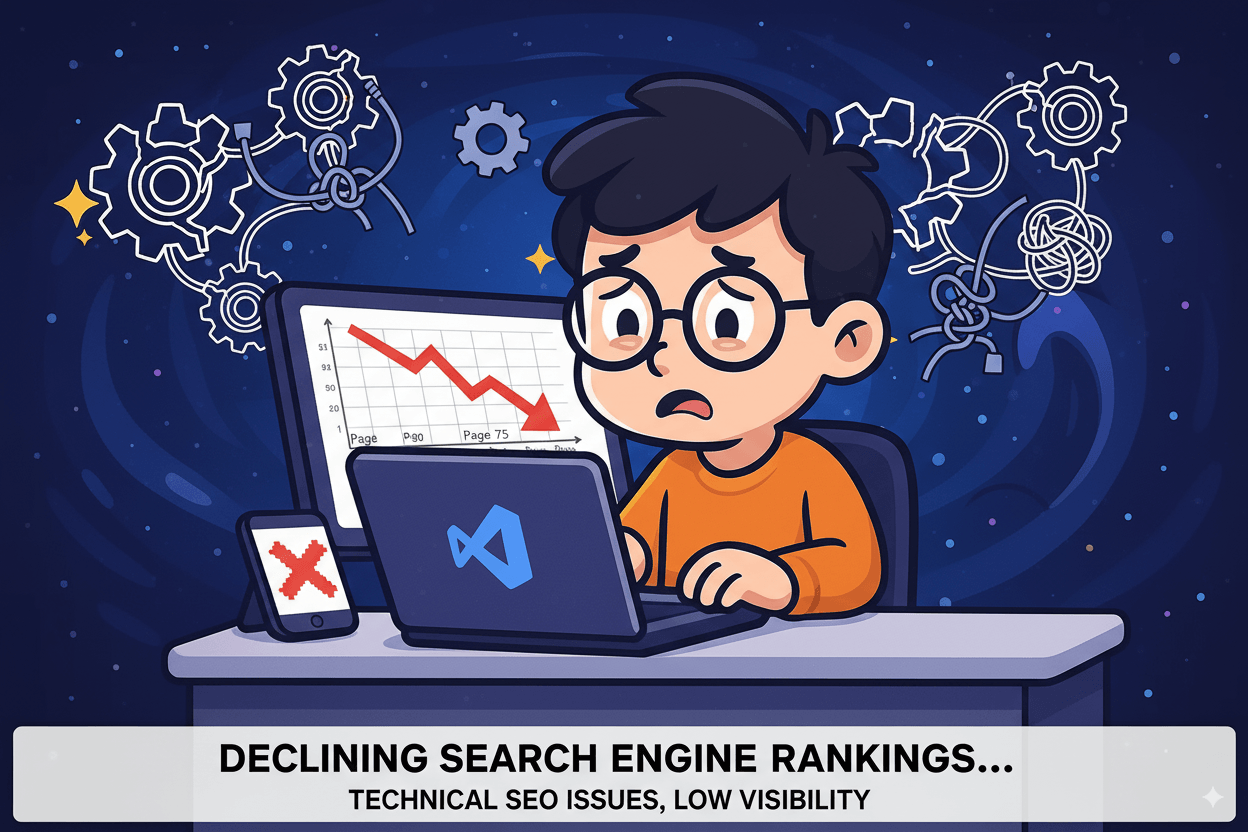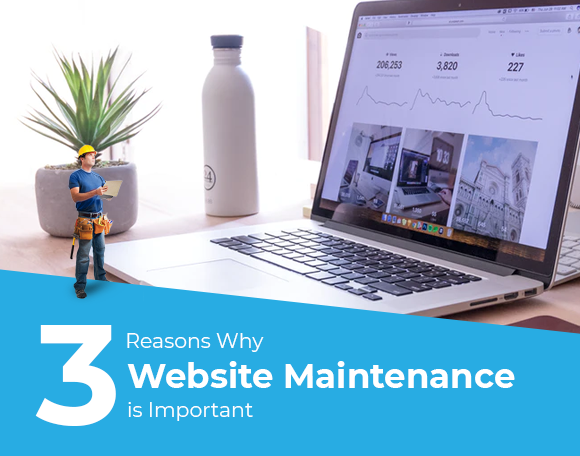
Introduction: The Importance of Website Maintenance
In the digital age, a website serves as the cornerstone of a business’s online presence. However, merely launching a website does not guarantee its success. Ensuring that a website remains functional, secure, and user-friendly requires ongoing professional maintenance. This essential practice not only affects the website’s performance but also plays a critical role in its security and the overall user experience.
Website maintenance encompasses a wide range of activities, including regular updates to software, monitoring of website performance, and ensuring that security measures are up to date. By conducting these tasks consistently, businesses can prevent various potential issues that may arise over time. For instance, outdated software can lead to vulnerabilities that expose the website to cyber threats, potentially compromising sensitive user data and damaging the organization’s reputation.
Moreover, search engines reward websites that are well-maintained with higher rankings in search results, ultimately driving more organic traffic. Regular maintenance activities, such as content updates and checking for broken links, ensure that the website remains relevant and authoritative in its niche. A seamless user experience directly contributes to improved engagement and conversion rates, as users are more likely to stay and explore a site that functions correctly and provides up-to-date information.
In addition to enhancing performance and security, professional website maintenance allows businesses to adapt to shifting market trends and consumer expectations. With user behavior constantly evolving, it is crucial for brands to remain agile and responsive. By engaging in regular maintenance, businesses can facilitate timely adjustments to design, functionality, and content, ensuring a competitive edge in the crowded digital landscape.
 Poor Website Performance and Speed
Poor Website Performance and Speed
A website’s performance is crucial not only for user satisfaction but also for its visibility on search engines. Users expect a seamless experience, and a slow-loading website can lead to frustration, resulting in higher bounce rates. Consequently, this can adversely affect your search engine optimization (SEO) rankings, as search engines prioritize websites that deliver fast and efficient user experiences.
Signs that indicate poor website performance include noticeably long loading times, typically exceeding three seconds, which may discourage users from staying on the site. Additionally, unresponsive pages, where elements fail to load or react to user input, can diminish the credibility of your website. Other indicators can be detected through tools that analyze your website’s speed, revealing delays across various devices and browsers.
In the current digital environment, where users often access websites using mobile devices, the need for mobile optimization cannot be overstated. A website that does not render correctly or loads slowly on mobile devices can alienate a significant portion of potential visitors. It is essential to ensure that your website is optimized for both desktop and mobile users, delivering fast and responsive interactions consistently.
Maintenance plays a pivotal role in enhancing website performance. Regularly updating software, optimizing images, and managing scripts and plugins can substantially improve loading times. Additionally, conducting routine assessments using performance measurement tools helps to identify bottlenecks and areas requiring attention. With a proactive maintenance strategy, your website can offer an optimal user experience, subsequently fostering greater engagement and higher search engine rankings. Recognizing these signs early can lead to timely interventions, ensuring your site remains competitive in the digital landscape.
Outdated Content and Design
 Maintaining a contemporary and engaging online presence is essential for any website, and this demand extends to both content and design elements. An increasingly dated website can drive potential customers away, as users often associate outdated content with a lack of professionalism and diminished credibility. Certain signs can indicate that your website is in need of professional maintenance, primarily focusing on outdated content and design.
Maintaining a contemporary and engaging online presence is essential for any website, and this demand extends to both content and design elements. An increasingly dated website can drive potential customers away, as users often associate outdated content with a lack of professionalism and diminished credibility. Certain signs can indicate that your website is in need of professional maintenance, primarily focusing on outdated content and design.
One major tell-tale sign of an outdated website is the presence of obsolete graphics. High-quality images and modern design trends play a significant role in attracting and retaining visitors. If your website features poor-quality images or outdated graphic styles, it may convey a message that your business is not keeping pace with current standards. Additionally, using classic designs may make the site appear stagnant, further dissuading user engagement.
Another indicator of a website needing maintenance is the presence of broken links. These links can frustrate users, eroding their trust in your brand as they are unable to access the information they seek. Regularly checking and updating hyperlinks can sustain user engagement and access to relevant resources, which is vital for maintaining a professional online presence.
Furthermore, irrelevant or outdated information can significantly undermine a website’s effectiveness. If your content does not reflect the latest developments in your industry, potential clients may question your expertise and authority. Maintaining accurate information, including product offerings and service descriptions, is crucial for establishing trust and promoting user confidence.
In summary, an outdated website can adversely affect overall user experience and engagement levels. Keeping your content and design up to date not only reflects a commitment to quality but also ensures your website remains a valuable asset for your business.
Security Vulnerabilities and Threats
In the digital landscape, website security has become an increasingly paramount concern for businesses and organizations. As cyber threats continue to evolve in sophistication, identifying signs of security vulnerabilities on your website is essential. Unpatched software is one of the most significant indicators that your site may be at risk. Websites often rely on various plugins and content management systems (CMS) that require regular updates. Failing to apply these updates can leave your site exposed to known security flaws that malicious actors can exploit.
Another key sign of potential vulnerabilities is observing unusual traffic patterns. If your website experiences a sudden spike in traffic from unknown sources or geographic locations, this could suggest that your site is under attack or being targeted for a security breach. Such anomalies may indicate possible attempts at unauthorized access, necessitating immediate action to analyze and address the situation.
Furthermore, encountering frequent error messages, particularly those associated with login or access issues, can signify underlying security weaknesses. These messages can highlight problems such as brute force attacks where unauthorized users attempt to gain entry by guessing passwords or attempting various user credentials. Monitoring these errors is crucial, as they can provide valuable insight into the security status of your website.
Implementing regular professional maintenance can significantly mitigate these security risks. Professional maintenance services include routine checks for unpatched software, monitoring traffic for suspicious activities, and implementing robust security measures to protect sensitive information. By addressing these vulnerabilities proactively, you can ensure that your website remains secure, thereby safeguarding both your business and your users from potential threats.

Frequent Technical Issues and Errors
In the digital landscape, maintaining a functional website is crucial for user experience and overall business performance. Frequent technical issues and errors, such as broken links, 404 errors, and server downtime, are common indicators that your website requires professional maintenance. These problems not only frustrate users but can also lead to lost potential customers and diminished credibility in the industry.
Broken links can create significant hurdles for users seeking information on your site. When a visitor clicks on a link that directs them to a non-existent page, it can result in a 404 error, which not only echoes disappointment but can also harm your site’s ranking in search engine results. Search engines view these errors unfavorably, which can negatively affect your website’s visibility and relevance. Routine checks and updates are essential to ensure that all links direct visitors to effective content, ultimately enhancing the user experience.
Moreover, server downtime is another pressing issue that can hinder website functionality. When your server is down, it means your website is inaccessible, leading to potential lost sales and damage to your brand reputation. Users expect seamless access to information, and prolonged outages can cause them to seek alternatives, reflecting poorly on your business. Regular maintenance, such as monitoring server performance and optimizing backend processes, can significantly reduce the chances of such downtimes. A professional maintenance strategy can address these issues proactively, ensuring that technicalities do not disrupt the smooth operation of your website.
In summary, businesses must recognize that frequent technical issues and errors are strong indicators that website maintenance is necessary. By investing in professional upkeep, businesses can offer their users a reliable, accessible, and frustration-free online experience, fostering greater trust and loyalty from their audience.
Lack of Mobile Responsiveness
In today’s digital landscape, mobile responsiveness is not just an added feature; it is an essential aspect of website design. With a significant portion of internet users accessing websites via mobile devices, a website that is not optimized for mobile can lead to user frustration and a decline in site traffic. Metrics such as a high bounce rate and low average time on page can signal that your website may not be mobile-friendly. When users encounter difficulties navigating on their smartphones or tablets, they are likely to leave your site and look for alternatives.
The consequences of a non-mobile-optimized website extend beyond user experience; they also significantly affect visibility on search engines. Google has shifted to a mobile-first indexing approach, meaning its algorithms now prioritize mobile versions of websites. This change emphasizes the importance of having a mobile-responsive site in order to maintain or improve search ranking positions. If your website struggles to appear in relevant searches, this may be a clear sign that professional maintenance is needed to enhance its mobile compatibility.
Websites that exhibit slow loading times, unsized images, and awkward navigation on mobile devices risk alienating potential users. Companies must recognize that a mobile-friendly website contributes not only to a positive user experience but also to brand credibility. A professional maintenance service can provide necessary adjustments, such as responsive design refinements, to ensure your website functions seamlessly across all devices. By prioritizing mobile responsiveness, you enhance user engagement and establish a stronger online presence, ultimately driving traffic and conversions.
Declining Traffic and User Engagement
Many website owners often overlook the critical importance of traffic and user engagement metrics when assessing the health of their online presence. A noticeable decline in these metrics can signal that professional website maintenance is needed. Consistent engagement and high traffic levels are essential for a successful website, as they directly affect visibility, credibility, and ultimately conversion rates.
When a website experiences stagnation or a decrease in traffic, it may indicate several underlying issues that require attention. One such issue could be deteriorating search engine optimization (SEO) practices, which may result from outdated content, broken links, or non-optimized site structure. Search engines prioritize websites that regularly update their content and adhere to current SEO standards. Failing to maintain these aspects can lead to lower search rankings, which, in turn, decreases user traffic.
Moreover, declining engagement metrics, such as the bounce rate, session duration, and pages per session, are equally critical indicators of a website’s performance. If visitors are leaving the site quickly or are not interacting with content, it is likely signifying that the site is not meeting their needs. Common culprits include poor website design, outdated user interfaces, slow load times, and unappealing content. By investing in professional maintenance, website owners can enhance user experience, ensuring that their website not only attracts visitors but also keeps them engaged with compelling content and smooth functionality.
In summary, a declining trend in website traffic and user engagement serves as a vital sign that warrants immediate professional maintenance. Addressing these issues proactively can revitalize a website, bringing fresh traffic and fostering a more engaged audience.

Missing or Incomplete Analytics
Analytics play a pivotal role in understanding a website’s effectiveness and performance. They provide vital insights into user behavior, enabling businesses to tailor their content and improve user engagement. However, if your website is missing analytics data or experiencing incomplete analytics tracking, it may signal a significant issue that warrants professional attention. Primary indicators of these problems include the absence of data sources, a sudden drop in metrics, or the presence of malfunctioning tracking codes.
A common issue arises from improper installation or configuration of tracking codes, often leading to inaccurate or nonexistent data. For instance, if your website relies on Google Analytics but fails to capture visitor interactions effectively, this could stem from issues such as blocked tracking scripts or incorrect settings within the analytics platform. Without accurate data, your ability to make informed decisions about marketing strategies, content updates, and user experience improvements is severely compromised.
Additionally, the absence of integrated data sources can lead to fragmented insights. If you are utilizing multiple tools to track various metrics and they are not communicating effectively, you may find yourself struggling to compile a comprehensive overview of performance. This lack of integration can prevent you from identifying trends or areas needing improvement. Regular professional maintenance ensures that your analytics setup is consistently monitored and updated, allowing for seamless tracking and reliable data.
In summary, if your website shows signs of missing or incomplete analytics, securing professional maintenance is critical. By addressing these analytics problems proactively, you can enhance your understanding of user interactions and ultimately improve your website’s overall performance and effectiveness.
Conclusion: Taking Action for Your Website’s Health
In today’s digital landscape, maintaining a website is more crucial than ever. As we have explored, various signs indicate that a website may require professional maintenance. These signs include slow loading times, outdated content, broken links, security vulnerabilities, ineffective mobile responsiveness, a decline in user engagement, and poor SEO performance. Each of these factors plays a significant role in determining the overall health and effectiveness of a website.
Addressing these issues promptly is essential to enhance user experience and maintain the credibility of your online presence. Regular website maintenance not only helps in preserving current users but also attracts new visitors. A well-maintained website reflects professionalism and builds trust with your audience, which fosters increased engagement and customer loyalty. Furthermore, ensuring that your site is secure protects both your data and your visitors’ information, which is an increasingly important consideration in today’s cyber landscape.
If you have noticed any signs that your website may need attention, taking proactive steps is critical. This may involve conducting a thorough website audit to assess performance issues or engaging with a professional website maintenance service to remediate the problems identified. An informed decision will lead to better management and longevity of your digital assets. Ignoring these warning signals could lead to decreased traffic, lower search engine rankings, and ultimately a poor return on investment.
In conclusion, maintaining your website is not just a task but a commitment to ensure its health and effectiveness. By recognizing the signs that necessitate professional intervention, you can take strategic action to enhance your website’s performance and security, thus ensuring that it meets and exceeds user expectations.
 Poor Website Performance and Speed
Poor Website Performance and Speed